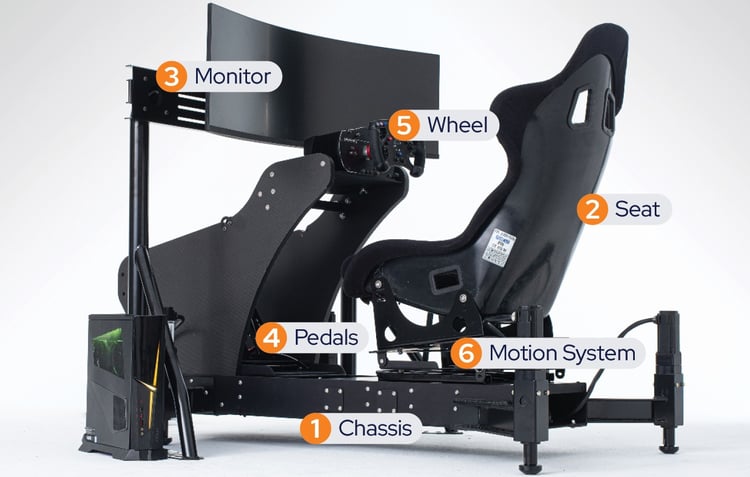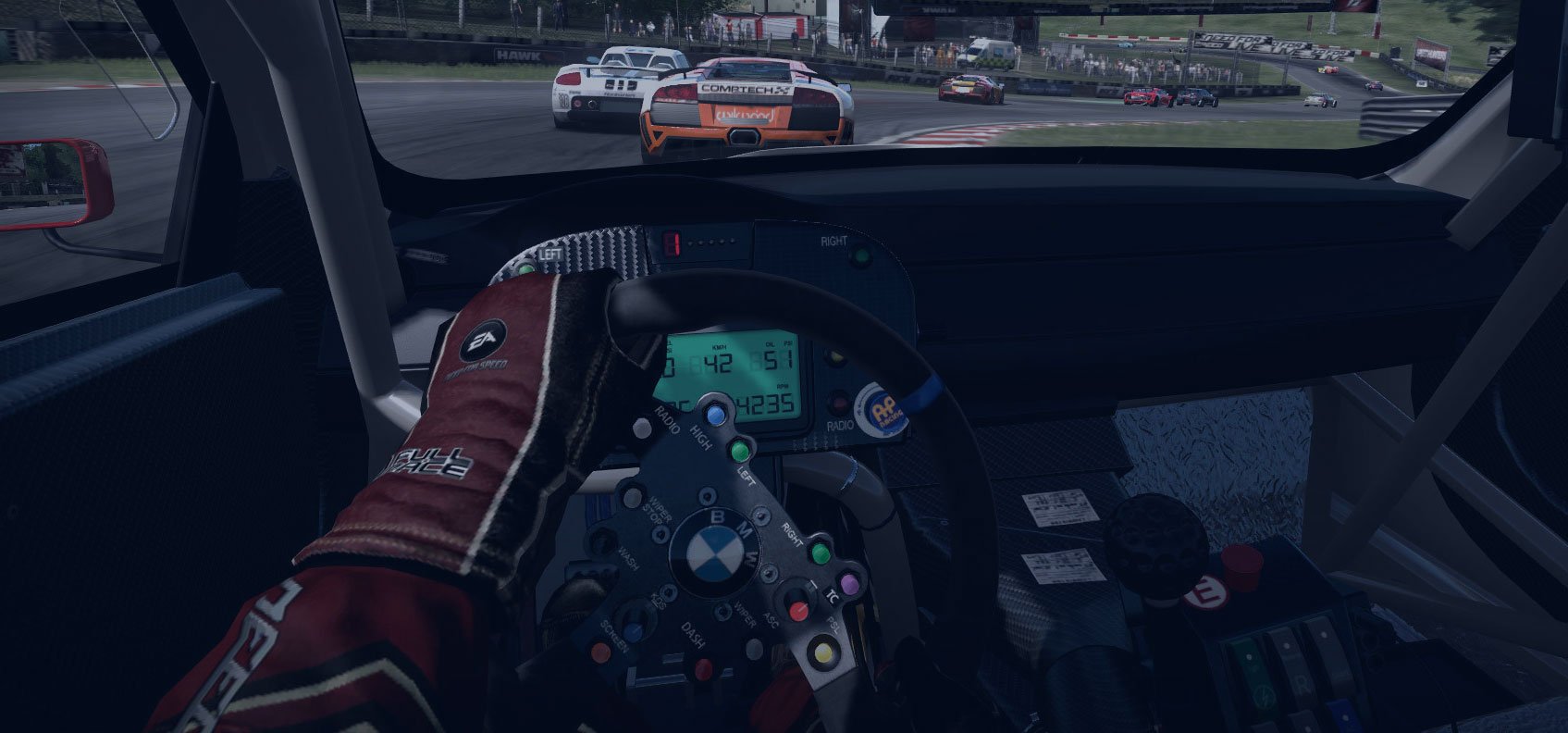
THE ULTIMATE GUIDE TO
SIM RACING IN 2025
the eSport of sim racing
Table of Contents
Part 1 What is sim racing?
ReadPart 2 Why is sim racing useful?
ReadPart 3 Sim racing vs real racing: pros & cons
ReadPart 4 How to get started in sim racing
ReadPart 5 Frequently asked sim racing question
ReadPart 6 Best sim racing games to play
ReadPart 7 Using your sim racing rig
ReadPart 8 How D-BOX enhances the sim racing experience through haptics
ReadPart 9 D-BOX testimonials
ReadPart 10 Be moved by your sim racing
Read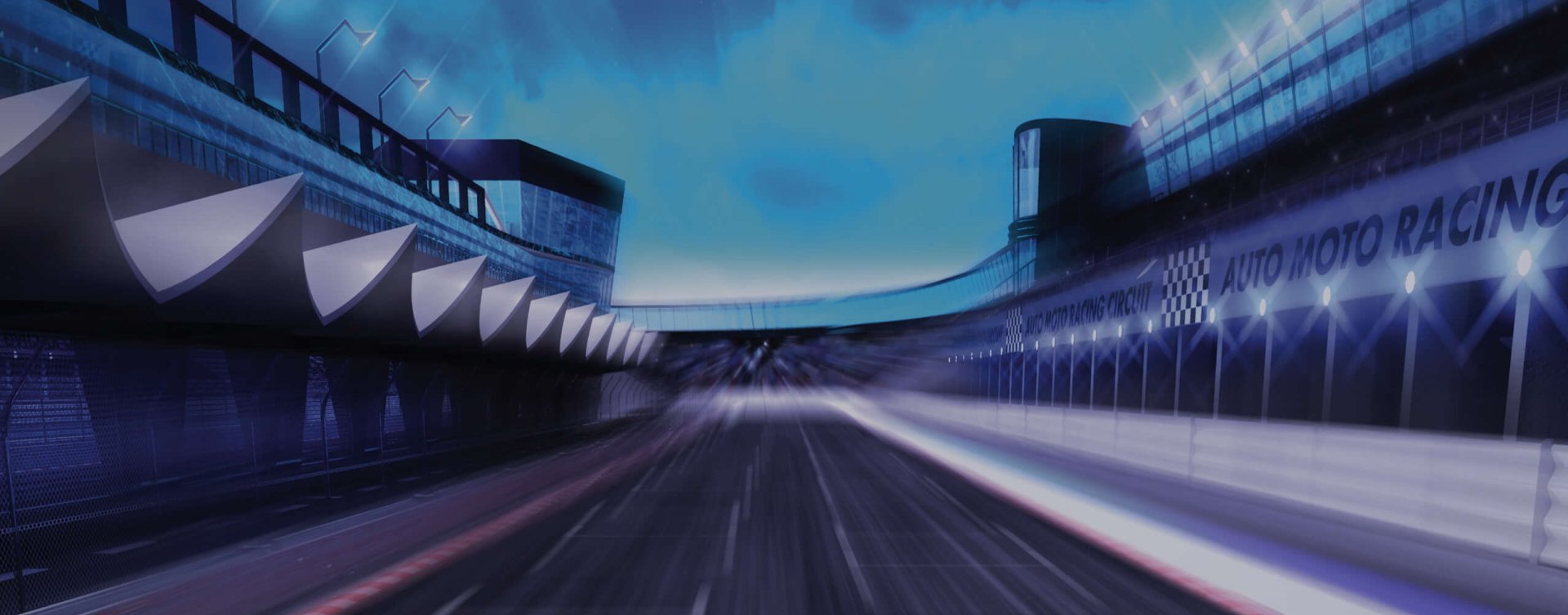
Are you looking to learn more about sim racing but you don’t know how to get started?
Don’t have time to read our entire guide now?
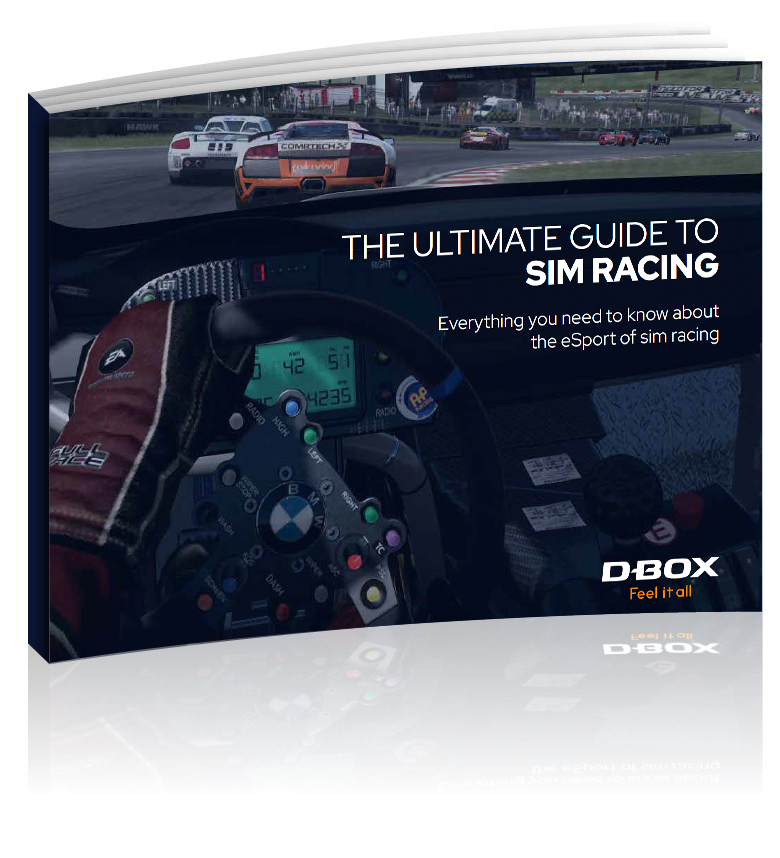
Stéphane Fortier
Business Development Manager, Sim Racing
About the author
With approximately 11 years of experience working in the sim racing industry at D-BOX, Stéphane is a recognized authority figure in the world of virtual motorsport. His expertise, deep knowledge of the field and innovative mindset have led him to sign multiple prestigious deals with esteemed organizations such as the FIA, Mercedes-Benz, NASCAR, F1 Arcade and more! With his dedication the sport, Stéphane continues to share his passion for gaming and motorsport by elevating the experience for sim racing enthusiasts worldwide.

Part 1
What is sim racing?
With the recent boom in popularity of videogames all around the world, the eSport of sim racing has also become much more common and more mainstream than it was just a few years ago.
Despite many people being familiar with the term “sim racing,” very few are aware of all the intricate details that go into the sport and even less are aware of the passion that sim racers have for their trade.
To help separate fact from fiction, to help educate others about the sport and to inspire the future generation of sim racers, this page will teach you everything that you need to know about sim racing!
Whether you’re wondering what exactly ‘sim racing’ means, how it differs from real life racing or if you’re looking to build your very own sim racing setup, we’ve got you covered in our ultimate guide to sim racing.
What does sim racing mean?
Sim racing, which is the shortened version of ‘simulated racing,’ means exactly what it implies—it is a form of car racing that takes place virtually rather than in real life. Similar to how car races work in the real world, drivers can virtually get behind the wheel of any type of vehicle (F1 cars, NASCAR/stock cars, rally cars, modified cars, etc.) and race against other drivers in real-time around different tracks and circuits.
Just as is the case with videogames, sim racing takes place thanks to the use of a computer or gaming console that can connect to a server and allow you to race with or against anyone, anywhere in the world.
While the most serious sim racers have formal setups called ‘rigs’ that consist of pedals, a seat, a steering wheel, monitors and more, you can race with nothing but a game, console, and a controller.
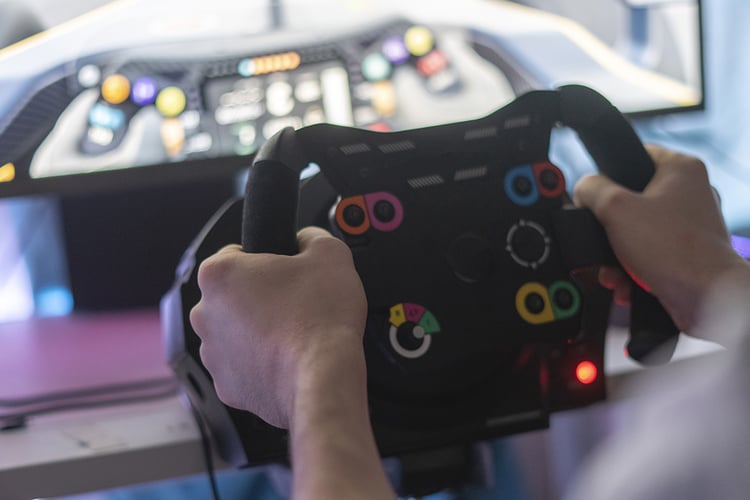
How close is sim racing to real life?
Despite being considered a videogame to some, sim racing can come extremely close to real life racing. Though there is no substitute for driving a real car on a closed track, the sim racing experience is what you make of it—sim racing can range from buying a steering wheel for your videogame remote and playing Mario Kart to having a professional, multi-thousand-dollar setup designed to replicate real driving as closely as possible.
Sim racing goes beyond just the steering wheel as well: those aforementioned expensive setups can come equipped with pedals, gear shifts, seat belts and more. The more detailed the sim racing setup—which is also called a rig—the more realistic the sim racing experience will be.
.png?width=750&height=500&name=Sim-Racing-Rig-D-BOX%20(1).png)
Is there money to be made in sim racing?
Like in all eSports, you have those who play for fun and those who play competitively for real-world cash prizes.
Today, video and mobile games of all kinds can allow anyone to make money from them—even mobile games like Clash Royale, which have millions of daily players, dish out big cash prizes to those who play the game professionally.
The same concept applies to sim racing. You have those who play for fun with their friends and family, and you have those who can make money from winning tournaments and being among the first to cross the finish line.
Can sim racing be a career?
Like most sports, if done professionally, sim racing can indeed become sustainable as a career—although, also like most sports, it’s a minority of people who are able to live off of their eSport salary.
There are multiple paths that one can take if they wish to do sim racing professionally and sustainably.
If you’re just starting out, you might consider trying to market yourself on social media and streaming platforms such as Instagram, Facebook, YouTube and Twitch. If you have the skills to go pro, then livestreams of your races (in which you show off your skills) have the potential to bring in a decent number of viewers. Even if you don’t necessarily have the top driving skills in the world, marketing yourself as a sim racing content creator can still be an effective way to make money off the sport, especially since you can earn sponsorships too !
Other platform such as Patreon allow users to purchase a paid subscription for exclusive video content. If you have a big enough following on other social channels, you can test the waters with a membership-driven platform to bring in a little extra money!
Being recruited into a sim racing team or league is another way to monetize yourself through the sport, and Cem Bölükbasi is an example of someone who was successful with that.
After being noticed online in 2017, he was selected to join the G2 eSports FA racing team, where he stayed competing in multiple races over the year that followed. That season he even raced for McLaren in the 2017 Formula One eSports Series!
In the 2018 Series, he switched to racing with Toro Rosso (currently known as AlphaTauri), totaling 32 points. However, it was in the 2020 season that he climbed to his biggest sim racing title yet: winning the inaugural Formula Renault eSport Series. To this day, he works full-time as a sim racer and real-life car driver who currently races in F2 thanks to his sim racing skills that transferred to the real world.
Jann Mardenborough, whose story is told in the 2023 film Gran Turismo, is also a great example of someone who was able to monetize themselves through eSports—his success with the game Gran Turismo led to him becoming a real-life pro driver for Nissan.
Sim racing teams and leagues
As mentioned above, if you become big enough, a sim racing team (sometimes referred to as a garage or scuderia) may pick you up; or you may be drafted into a league. These are arguably two of the biggest ways to make a career out of sim racing!
A sim racing league can be thought of as a type of virtual club where you can race with other people with similar values. For example, if you dislike racing against others who crash into you for the fun of it, then you can join a league where the rules prohibit the bumping of others during the race. Sim racing leagues can help you find a community of like-minded people to race and discuss with as you grow with the sport.
While anyone can join a league or create a league of their own, sometimes when you’re a skilled driver you can be drafted into a private league with other drivers of a high caliber. When these leagues host championships, they often pay winners in cash.
A sim racing team, on the other hand, is when a group of sim racers come together to form a team in which they work together to win races, earn points and to help each other improve. Like leagues, anyone can technically form a sim racing team—but if you’re consistently winning races, chances are one of the many professional teams will spot and try to recruit you. Being part of a professional team such as Team Redline will mean that your activities will be sponsored, you will be entered into the biggest races (which tend to have the biggest cash prizes) and you will have the opportunity to work with some of the best drivers in the world, including Verstappen!
On top of it, the majority of the biggest F1 racing teams participate in the eSport Pro Championship!
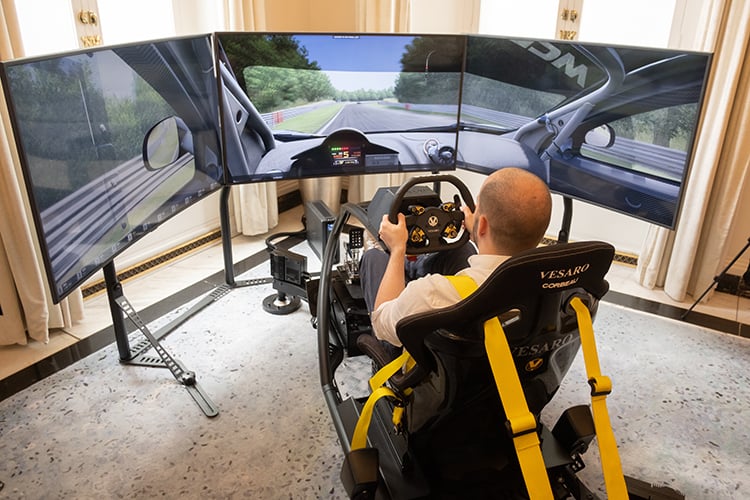
How much money do sim racers make?
Even though there are multiple sim racers who seemingly devote all of their time to the sport, it’s hard to pinpoint just how much sim racers make since there are multiple types revenue streams for sim racers—and not all of them are made equal.
For example, if you’re a sim racing content creator, you may be making money off of brand endorsements, ad revenue, affiliated links and other sources of paid promotions. These amounts can range from pennies to thousands of dollars per month.
The sim racers who make the most money are those who race professionally and who win the big championships such as the Porsche TAG Heuer Esports Supercup, the F1 eSports Series and more. However, wining races—whether big titles or small—can have payouts that start at a couple hundred and go as high as a couple hundred thousand dollars. iRacing claims to payout more than $500,000 in cash prizes throughout its six World Championship series held annually, while the eNASCAR Coca-Cola iRacing Series awards its winner $300,000.

Part 2
Why is sim racing useful?
Sim racing as a form of entertainment and gaming
While a select few may have found that sim racing’s use comes from its ability to generate enough money to sustain their careers, it also has uses beyond just going pro!
For some, sim racing enhances their lives purely as a means of entertainment. While racing, players can get lost in the game, temporarily forget about their responsibilities and have some good, old-fashioned fun!
For others, sim racing acts as a form of community in which they can make friends, interact with other like-minded individuals and spend time with those who share the same passion as them.
Sim racing as a means to improve real life driving
Beyond just being a game or a means to a career, sim racing can also be an extremely effective training tool for real-world drivers.
Picture this: you’re a NASCAR driver just starting out in the lower circuits. You hit the track to practice before a race next week and in an attempt to save valuable seconds at a curve, you try a new trick and crash your car.
What are your next steps? Potential injuries aside, your training session will come to an immediate end and you’ll have to find the funds to replace or repair the car. Plus, you didn’t even successfully master the trick you wanted to implement—meaning that you’re not even a better driver than you were prior to the accident.
Now, imagine that you were training on a realistic game such as iRacing, which uses laser technology to scan real-world tracks to make identical virtual versions of them.
You attempt the new trick at the first curve and you crash your car. What happens next?
Your game resets, you’re 100% uninjured, your finances stay intact and you can keep trying until you successfully make the curve. Not only did you save yourself from physical and financial harm, but you’re now confident that you can attempt the manoeuvre in next week’s real-life race!
This is why today, sim racing is becoming a much more common training tool amongst professional real-world drivers. It allows them to practice risky tricks in a cost-effective and safe manner—and since on-track practice sessions are rare, the hours they log while sim racing are extra valuable!

Part 3
Sim racing vs real racing: pros & cons
Pro: sim racing is more cost-effective than real racing
As demonstrated in the example above, sim racing is a more cost-effective option than real-life racing.
This is for multiple reasons. Not only do you not have to deal with purchasing an expensive vehicle and repairing it as need be, but with a virtual car, you don’t need to pay for maintenance, you don’t need to pay for fuel and you don’t need to pay for access to the tracks to use it on. You also don’t have to pay for other team expenses such as the salaries of mechanics, which saves even more money!
For this reason, sim racing is significantly cheaper to adopt as a sport as opposed to real-world racing.
Con: sim racing can still be expensive for a quality rig
That being said, for as much as sim racing will save you expense-wise compared to owning a real car, it can also be an extremely expensive sport if you take it seriously.
Even though sim racing can be done with nothing but a basic PC and steering wheel, the more serious you take it, the more expensive it gets! If you were to invest in a professional-grade sim racing rig (also known as a cockpit, which is the frame that the simulator sits on), it would likely feature pedals, a steering wheel, a stick shift, multiple monitors, a seat, a motion system and more—running a bill that can easily reach upwards of $25,000, with the most high-end, turnkey rigs being priced at $50,000 and above. While it’s cheaper than a real car, it’s certainly not cheap!
Pro: sim racing is more accessible for fans and has niche online communities
As opposed to real-world racing, it’s much easier for the fans of sim racing to access the sport. The virtual nature of sim racing means that anyone can watch a big race in real-time from anywhere in the world, and there are no exorbitant fees to attend the ‘live’ version of the event! Also, since it’s virtual, it’s also more eco-friendly!
Additionally, since sim racing takes place virtually, there’s an abundance of niche, online communities where both racers and fans alike can unite to share their passion. No need to travel to specific tracks to reunite with others as passionate as you!
Con: sim racing has a smaller audience than pro racing
Despite being able to find other fans and drivers online, sim racing still has a smaller audience than real-life pro racing. This is because even though “real” races take place on a closed circuit, they have multiple TV contracts on popular networks that lets the races reach millions upon millions of eyes.
Even though anyone can stream a sim racing race from anywhere, it’s not quite as popular as the “real thing”—which hinders its audience.
Pro: sim racing allows you to try multiple cars
Whether one drives a real, physical vehicle or a virtual one, all drivers likely have one thing in common: the desire to get behind the wheel of as many cars as possible.
In sim racing, you can drive nearly any vehicle! From F1 cars to NASCAR cars to rally cars and more, each car will cost you extremely minimal fees, or maybe even just the cost of a specific game (though more on that later!), whereas in real life, trying out different vehicles would come with exorbitant costs.
Con: sim racing is not 100% identical to real racing
No matter how close sim racing is to real life racing (and it can get extremely close!), there will never unfortunately be a true replacement that is 100% identical to real-life racing. There will always be one or two factors of difference that make driving a real car different to a virtual one.
.png)
Part 4
How to get started in sim racing
Building your sim racing rig
While it may seem scary and complicated to build your very first sim racing rig, you don’t need to worry. There are so many instructional videos on YouTube for nearly any piece of sim racing equipment you need to assemble or software that you need to install! Plus, there are so many people willing to answer your questions on platforms like Reddit that building your very own complete sim racing setup is much easier than it seems.
Even if you simply purchase a steering wheel from a local store, there will always be a sim racing upgrade path that you can take to take your setup from basic to near-professional quality.
However, if you’re just getting started and looking to put an entire sim racing setup together, here’s how you should go about it:
1. Purchase a sim racing chassis
If you’re going for a complete sim racing setup, then the first step is to find a chassis, which is the frame that all the rest of your equipment will sit on. Though there are many different kinds of chassis that exist, most are tubular or aluminum profiled.
When choosing a chassis, you should look for one that can support heavy loads without bending or breaking and one that is easy to assemble and easy to modify, in case you decide to add different sim racing accessories to your setup a few years down the line.
2. Find your sim racing seat or chair
After deciding on your frame comes time to choose your seat! Choosing the perfect sim racing seat for you may just be one of the most important moments in the rig assembly process. This chair is the place you will sit for hours upon hours, potentially for years. Your sim racing chair should be comfortable and made from durable materials, so you don’t have to replace it!
When selecting a sim racing seat, you should also consider the purpose of your rig. If you’re using your sim racing rig to train for real races, you’ll probably want to find a chair that feels similar to the seat in the real car you’ll be driving. If you’re just using your rig as a hobby, then feel free to select the sim racing chair that you feel most comfortable in!
Companies such as Sparco, Corbeau and Recaro can be used as references to help you compare different models when it comes time to get information on sim racing seats.
3. Decide on your monitors & monitor stand
Just as how you can’t have a sim racing rig without a steering wheel (which we’ll get to soon!), you can’t participate in any races if you don’t have any screens to watch them on. While companies such as Oculus, HTC and Varjo may one day help to make VR sim racing mainstream, it is not the case today—which is why you need to invest in good sim racing screens!
When it comes to sim racing monitors, it really is a question of personal preference. Some prefer to have all the action occur on one screen while others may prefer to be fully immersed in their race by having three or more. These screens can be flat or curved, extra wide or normal sized. It’s fully up to you!
When you research the different kinds of monitors that exist, you’ll quickly notice that some of them will come attached to your chassis while others will require that you purchase a separate stand to hold them up. Your sim racing monitors setup is one of the aspects of your rig that comes down essentially to personal preference, so feel free to ask questions to companies such as Samsung and inquire about accessory compatibility!
4. Your pedals and pedal base
One of the most essential parts of driving a real car involves the pedals, so now’s the time in the installation process to put the pedal to the metal and find your perfect set!
The most important thing to consider when shopping for a sim racing pedal set is to find one that reacts appropriately to the pressure you place on it and that will allow you to race in a consistent fashion. If for the first half of the race the pedals are super sensitive and towards the end you have to slam your foot down on them to accelerate or brake, then it’s probably not the right set!
While there are many different companies that manufacture pedals, you should be sure to visit sim racing specialists such as Heusinkveld, Simucube, Fanatec, Logitech and Asetek.
5. Sim racing wheels and wheel bases
Simucube, Fanatec and Asetek (along with Gomez Sim Industries) are great references not only for pedals, but also for sim racing wheels and wheel bases.
Your wheel base is an essential piece of equipment that your steering wheel will be attached to and that sends force feedback to your wheel, whichis what you will use to control every single virtual car you drive. With a sim racing wheel, not only do you get infinitely more control over your vehicle, but you can also receive crucial messages through the wheel about the health of your car!
Plus, let’s face it—racing with a steering wheel is much more fun than just racing with a controller.
All five of these components, when put together with a gaming PC, make up the basic elements of a sim racing system!
6. Sim racing motion system
While not required on a rig, many avid sim racers add a motion system to their sim racing setup once they’ve got all the essentials. Motion systems are a useful add-on for multiple reasons: they add realism, they further immerse you in the race and it can provide you with subtle cues that help you improve your lap times!
Ready-to-purchase sim racing rigs
Even though most new sim racers start out by building their rigs piece by piece (sometimes over a couple of years!), it is possible to purchase a fully assembled, all-components-included turnkey solution that requires almost nothing from the user other than plugging it in.
While this option takes away a lot of the “is this piece compatible with the one I already have?” questioning, it’s definitely the more expensive option. To get a quote from most sim racing rig manufacturers, you could reach out to them with the accessories you really want your rig to have and see what options they propose.
.png)
Part 5
Frequently asked sim racing questions
What is the best sim racing simulator?
The answer to this question will vary widely based on the intended use of your sim racing system.
If you’re just racing amongst friends for fun, the best sim racing simulator will be the one that simply gives you a place to sit and get lost in the game. If you’re using your simulator to become a pro, you’re going to want a system that allows you to be in tune with your vehicle and that communicates crucial information to you during the race.
However, if you’re a professional NASCAR driver, then the best sim racing simulator will be the one that 100% recreates the sensations of being in your real car, including everything from the seat to the pedals to the steering wheel to motion systems. And, if your simulator is eventually going to be paired with motion, the stability of the chassis (the rig flex) will need to be sturdy to minimize the rattling sounds from vibrations.
There is no right or wrong answer to this question—the only one who knows the answer is yourself.
Is a TV good for sim racing?
You can absolutely race with a TV serving as your sim racing screen!
However, TV’s will come with some pros and some drawbacks. For example, a pro of a TV would be that it is versatile: you can watch TV with it when you’re not racing, making it a multi-use peripheral!
A drawback of using a TV as a sim racing screen would be that it likely won’t have the same response time as a gaming monitor that’s intended to be used in fast-paced environments such as in a sim racing game. Since the response time of a TV will likely be slower than a real monitor, you may experience a slight lag by using a TV.
Whether or not this bothers you enough to purchase a monitor over a TV is up to you!
Do you need a high FPS for sim racing?
FPS, which stands for ‘frames per second’, is an important component of sim racing. In fact, it’s largely a lower FPS that contributes to the slower response time of TVs, as mentioned just above!
While it’s undoubtedly beneficial to have a high FPS, you don’t necessarily need a high FPS to be a sim racer. You can still race with a lower FPS, though you’ll experience some lag. It’s important to know that lags in sim racing can result in seconds lost, which will impact your race placement! If you’re looking to go pro, you should probably avoid a low FPS monitor.
Though it’s up to you what FPS to go with, the general consensus is that higher is better for the speedy sport of sim racing.
.png)
Part 6
Best sim racing games to play
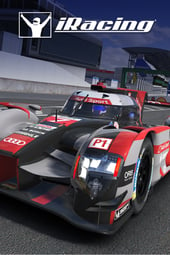 iRacing
iRacing
Without a shadow of a doubt, iRacing is the most popular and arguably the best sim racing game you can play. It allows you to drive replicas of nearly any car on officially licensed, laser-scanned replicas of tracks around the world and requires only a computer to play! If you’re looking for the sim racing game with the most realistic driving mechanics, then look no further than iRacing.
iRacing also hosts official races, allows you to host your own private racing leagues and offers so many different gaming modes to allow you to be at the top of your game. Whether you’re just starting out in sim racing or if you’re a seasoned veteran, iRacing is a must.
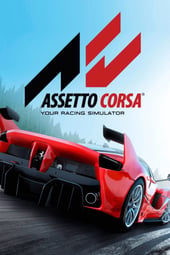 Assetto Corsa & Assetto Corsa Competizione
Assetto Corsa & Assetto Corsa Competizione
Available for both PC and console, Assetto Corsa—and its more competitive version, Assetto Corsa Competizione—are two more must-have sim racing games for aficionados. While the games have similar names, they are both quite different. Assetto Corsa provides players with a diverse racing experience that allows them to do whatever they want in whatever car they want, whereas Assetto Corsa Competizione is the official game of the real GT World Challenge and only has those series of competitions and cars.
Featuring an amusing & challenging career mode, both single player and multiplayer options as well as the ability to bring tyre flat spots, heat cycles and more into the game through telemetry data, Assetto Corsa is on the list of top sim racing games due to its extreme realism.
The competizione version of the game is the official GT World Challenge videogame that allows you to compete against official drivers, real teams and even in 24 hour races! The game is also crafted using Unreal Engine 4, making it one of the more realistic competitive options on the sim racing gaming market.
 EA SPORTS™ WRC
EA SPORTS™ WRC
WRC, which stands for the World Rally Championship, is the official racing game of rallyers!
EA SPORTS™ WRC is also available on PC as well as on a large number of consoles, including Playstation, Xbox and more.
This latest version of the game is a sim racing fan favourite because of its dynamism, as it does a great job of keeping up with the real demands of rally today. For example, if you’re driving a hybrid car, you better be sure to optimize your battery life!
EA SPORTS™ WRC is also highly regarded for its dynamic handling system, its more than 200 rally tracks (known as stages) and its ability to travel through rally history with more than 70 historic vehicles in the game.
 F1 24
F1 24
F1 24 makes the list of top sim racing games to play because not only is it the official racing game of Formula 1, but it allows you to race in hyper-realistic cars & circuits, is available to be played with VR and it uses adaptive AI to keep things competitive for all drivers, not just for the best ones!
In F1 24 you can either play out a full racing season, race in sprints, or you can even discover what its like to be an F1 driver outside of the drivers seat, with the game allowing you to show off your trophies, cars and earnings in their F1 life mode.
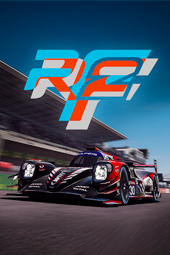 rFactor 2
rFactor 2
rFactor 2 is another game that is adapted to both beginner and pro drivers thanks to AI. It also supports a gameplay in both day and night conditions and in varying weather conditions!
The game of choice of many sim racers, rFactor 2 is also used in some of the bigger eSport championships such as McLaren’s World’s Fastest Gamer and Formula E.
.png)
Part 7
Using your sim racing rig
Popular sim racing tracks to try
If you’re just starting out in sim racing and are overwhelmed by the sheer number of different circuits out there, you’re not alone! While you’ll be able to explore them all in due time, here are some of the must-drive ones to get you started:
1. Silverstone Circuit
The Silverstone Circuit is one of the most historical circuits there is due to it being home of the British Grand Prix, which first took place in 1948!
Not only is this circuit a great one to play on due to its age, but the 1950 edition of the British Grand Prix was the first championship of the new World Championship of Drivers, which was the championship race of Formula 1.
2. Circuit de Monaco
The Circuit de Monaco is known for its breathtaking views and for its complexity, making it another track for beginners to admire! Located literally on the edge of the Mediterranean Sea and the Maritime Alps, it’s truly a sight to see.
Not only that, but unlike most race circuits, the Circuit de Monaco is located literally through the city—requiring much more skill than your average race.
3. Circuit de Spa-Francorchamps
One of the more popular sim racing tracks, the Circuit de Spa-Francorchamps is adorned with stunning views thanks to its location in the middle of the Belgian Ardennes forests!
This track also features a few sharp turns and is unique in its shape, making it a favourite of sim racers and real life drivers alike.
4. Nürburgring
The Nürburgring is a motorsport complex located in Germany that features both a Grand Prix circuit as well a Nordschleife track, which is a long track built through the Eifel mountains.
This track is extremely special and popular around the world thanks to its long and rich history that dates to 1927, as well as to its complexity—there are many turns, elevation changes and track changes that make it a difficult track to master, and therefore a fun one to try for sim racers.
5. Circuit of the 24h of le Mans (Circuit de la Sarthe)
The Circuit of the 24h of le Mans—also known as the Circuit de la Sarthe—is arguably one of the most popular sim racing tracks and features a whopping 38 turns!
This track is also special because of the real-world race that occurs there: instead of racing to the finish line, cars must be able to race for 24 consecutive hours—meaning that they must balance speed and performance with the mechanical ability of their car to run for 24 straight hours. This 24-hour race also exists in the sim racing world and it’s one of the most popular events!
6. Daytona International Speedway
If you’re a fan of racing, then you’ve already heard of the Daytona International Speedway. This legendary track is home to the world’s biggest NASCAR race—the Daytona 500—and hosts a plethora of other motorsport events year-round.
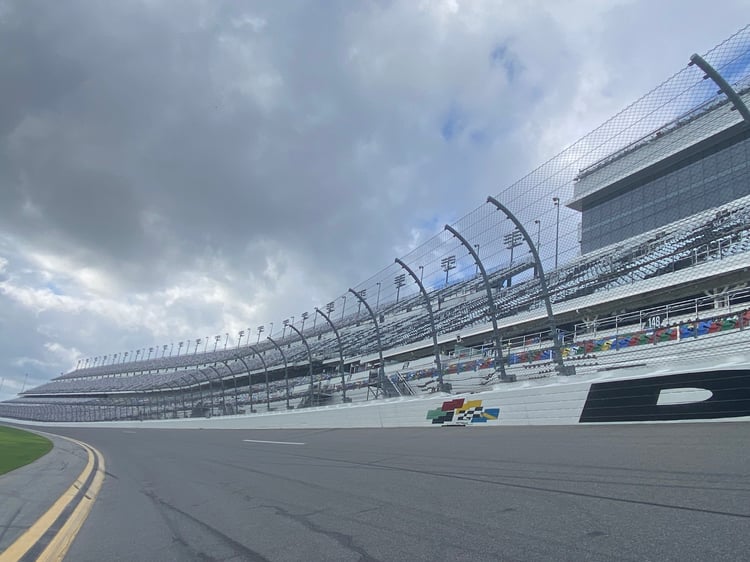
Common sim racing terms and acronyms
With as big of a global community as sim racing has, it’s no surprise that a lot of the common sim racing terms have developed slang and acronyms to make them faster to type or to explain mid-race. Here’s a list of some of the most common ones to help you navigate the online communities!
- Aluminum: A light metal
- Aluminium profiled: a type of rig made from aluminum
- Apex: The most inside point of a corner
- Bend: A very shallow turn
- Blistering: When a tire overheats, causing rubber to detach from the tire
- Blocking: The act of positioning your vehicle in such a way that others cannot pass you
- Blue flag: A blue flag that signifies that you must let another car pass you and cede your position
- Chassis: The basic structure of a race car, its skeletal elements
- Checkered flag: A black and white flag that signifies the end of a race
- Chicane: A part of a track on which one turn is followed by another turn in the other direction
- Circuit: Either a race track, or a series of races
- Clipping: The name for a minor contact between cars
- Curb (also seen as kerb): A raised part of pavement that separates the track from run-off zones
- Cockpit: Where the driver sits inside of his vehicle
- Dead zone: Self-imposed limits in sim racing that can be calibrated through your equipment so that they do not register your input (i.e.: ignoring a driver accidentally pressing the brake pedal lightly if they rest their foot on it)
- Drift/drifting: When you intentionally create a slide using all your wheels into a turn
- Donut: The act of a car spinning in a circle without moving forward, creating tire tracks in the shape of a donut to form (usually done after winning a race)
- Downforce: The lift force created by the aerodynamics of certain pieces of car that gives the car a better grip
- Downshifting (or its opposite, upshifting): When you either change gears to a lower or higher one
- Drag reduction system (DRS): When a car opens its rear wing to reduce air resistance, causing it to be faster
- Early apex: When a driver turns a corner early
- FIA: The Fédération Internationale de l’Automobile, who is the governing body for most car racing
- Graining: The act of tires beginning to peel when overused
- Hairpin: A very sharp angle turn on a track, usually 180 degrees
- Heel–and–toe: A racing technique in which a driver uses the brake, throttle and clutch at the same time to gain engine speed entering a turn
- Ideal line: The most efficient path to complete a certain track
- Lap: The term for one turn around a circuit
- Laps down: The number of laps a certain vehicle is behind the leader
- Late apex: When a driver turns a corner too late
- Oversteer: When a car’s reer wheels slip, causing the back of the car to slide forward
- Pit lane: The section just off of the track that a car pulls in to for mid-race repairs
- Pit stop: The action of pulling in the pit lane for repairs
- Pole position: The position when starting a race that’s favored
- Rain tires: Tires designed for a wet track. Capable of dispersing impressive quantities of water
- Red flag: A red flag that signifies the race must immediately stop due to dangerous driving conditions
- Rubber abrasion: Ware and tear on tire surface
- Slicks: Tires designed for a dry track
- Slipstreaming: The act of taking advantage of a car in front of you to reduce drag
- Stint: The amount of time elapsed between pit stops
- Telemetry: Equipment that submits a car’s data back to a driver’s team
- Throttle: The accelerator pedal
- Trail braking: A braking technique that allows you to control the car and hit turns in the track with more momentum
- Travel: The extent to which you can move a pedal before it prevents you from pressing it more
- Tubular chassis/rig: A rig that involves tube-shaped structures
- Understeer: When a car’s front wheels slip, causing the car to drive in a straight line
- Yellow flag: A yellow flag that signifies that no cars can pass each other and all must slow down temporarily due to a danger on the track
.png)
Part 8
How D-BOX enhances the sim racing experience through haptics
What is haptic technology?
D-BOX uses haptic technology to enhance the sim racing experience and to give drivers a competitive edge over their competition. While the exact science of haptic technology is complex, essentially it boils down to this: haptic technology is used to transmit an information to a person using only their body’s sense of touch. The mechanism that stimulates the sense of touch and that is behind the transmission of information is referred to as haptic technology, while the information received by the end user is called haptic feedback.
The conveying of information is what sets haptic technology apart from simple vibrations or tactile feedback. If the person receiving the haptic feedback isn’t being communicated to through the sensations, then the feedback being received is not haptic.
At D-BOX, we use a piece of hardware known as an actuator to transmit haptic feedback to users in multiple business sectors outside of sim racing such as in movie theaters, home theaters, gaming, professional simulation & training as well as in the attractions industry.
Using movements, vibrations and textures to create a realistic sim racing motion experience
With close to 25 years of experience in creating immersive haptic experiences, D-BOX's haptic designers have coded more than 65,000 unique haptic effects that are made up of different movements, vibrations and textures. This allows us to create an infinite number of combinations to increase the realism of a sim racing motion rig.
These combinations communicate crucial information to sim racers in real time about things such as the health of their car (ex: the grip of the tires), the track conditions (ex: whether it’s slippery due to rain or of there are bumps in the track) as well as about their performance in general. If you understeer or oversteer going into a curve in the track, your sim racing motion platform will physically inform you to this fact so you can immediately work to correct it!
D-BOX haptic feedback is also known for its subtlety—if you crash into a wall you’ll evidently feel a lot of movement, but the large majority of the feedback communicated to drivers is extremely subtle. It’s so subtle that you can even tell which car you’re driving based simply on the gentle engine vibrations!
Working with the biggest gaming studios
To make the haptic sim racing experience as realistic as possible, D-BOX works directly with some of the biggest gaming studios in the world such as Ubisoft, Codemasters, Turn10 Studios, Kunos, Polyphony Digital and Kylotonn to create haptic feedback based on a game’s telemetry data—ensuring that our haptic motion systems move users in real-time based on their in-game actions.
We also work in similar fashion with big racing game producers such as iRacing and rFpro, meaning that racers can feel the most up-to-date information at all pivotal moments of a race!
D-BOX’s Adaptive Gaming Mode
To make sure that a maximum number of sim racers have access to D-BOX haptic feedback, we recently developed Adaptive Gaming mode: a new mode in which users can experience haptic feedback for any game, not just the ones that have been hand-coded by D-BOX!
Adaptive Gaming mode allows users to customize their haptic profiles (and therefore the feedback they’ll receive) to their exact likings and triggers different vibrations and textures based on the input in they make on their keyboard, mouse or gaming controller.
Between Adaptive Gaming mode and the games that have been hand-coded, sim racers have access to literally any PC racing game that exists with haptic feedback to enhance their performance!
D-BOX haptics used by professional drivers
Multiple real-world drivers use sim racing rigs outfitted with D-BOX haptic technology to train for their real races. For example, NASCAR driver Anthony Alfredo uses his sim racing rig as a training tool, as does Rally driver Louise Cook!
By training with haptic feedback, they’re able to practice their tracks over and over again until they perfect every turn and every straight. It also allows them to try out new skills and to master old ones, giving them a leg up on the competition when they hit the track!
Alfredo recently sat down with us to discuss the importance of haptic sim racing in his training as well as created a video series about different techniques that can be mastered on a motion rig.
For real-world drivers such as Alfredo and Cook, sim racing with haptic feedback has proven to be an invaluable tool.
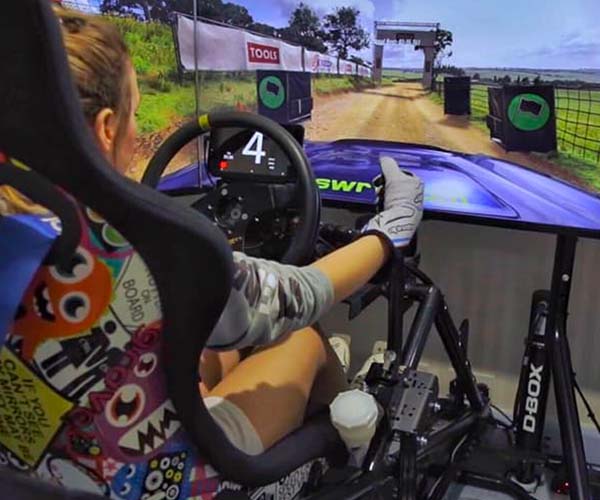 |
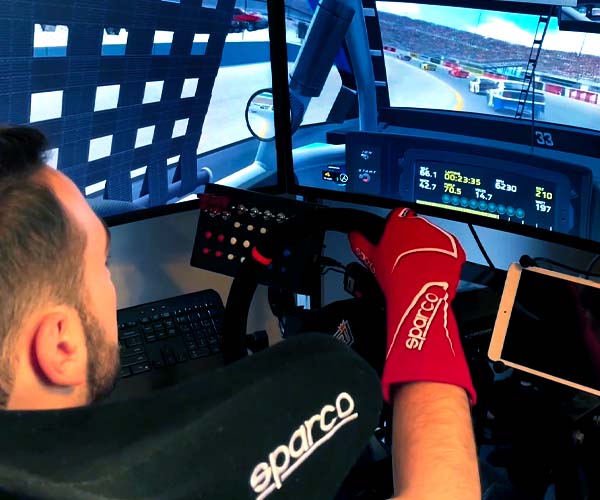 |
.png)
Part 9
D-BOX testimonials
Don’t just take it from us—adding D-BOX motion to sim racing rigs has benefitted all kinds of people from all across the world.
“I’ve been using D-BOX for a while now and I really love the way it mimics the chassis of the rally car. Obviously, being a rally driver, I tend to choose rally games that have got a lot of 3D stages, so lots of jumps and bumps, so really putting the actuators through their paces. They’ve been holding up really week. I know that they are really strong—super strong—and I’ll be using them for a long, long time!” – Louise Cook, professional Rally Driver
“D-BOX technology accurately represents the subtle cues you feel in a race car like the tires, suspension and chassis movement. That's what makes this haptic system different from other motion platforms that maybe just have varying speeds. This is crucial for any user, especially a real-life driver like myself, using it as a training tool.” – Anthony Alfredo, professional NASCAR driver
“You can feel every little bump and niggle in the circuit surface, as well as what the car is doing itself—It feels extremely immersive, you can really feel the weight of the car with the D-BOX system!” – Marc Puc, professional sim racer
"Advanced SimRacing exclusively uses D-BOX haptics & motion for conception and assembly of professional-grade racing simulators. The system ultimately brings the entire simulator to life by providing a lightning fast and accurate replica of the virtual cars’ suspension. When properly tuned on a high-end racing simulation chassis, D-BOX helps drivers and enthusiasts learn more about vehicle physics, momentum, and behavior on track. Through our partnership with D-BOX, we have equipped countless professional and amateur drivers with a proper training tool that allows them to improve their performance on track and work on their racecraft all while in the comfort of their own home. Beyond the valuable training tool that D-BOX represents, it goes without saying that it makes for an extremely fun and immersive experience for anyone looking to experience the thrill of racing" - Marc-André Ladouceur, Co-Owner at Advanced SimRacing
.png)
Part 10
Be Moved By Your Sim Racing
Whether you’re new to sim racing or you’re a seasoned veteran, anyone can benefit from adding haptic technology to their sim racing rigs. The subtle movements, vibrations and textures provide drivers with crucial information about the performance of their vehicles that can make all the difference—especially when it comes down to those final laps.
If you want to learn more about the benefits of haptic technology on sim racing or if you’re ready to join the haptic revolution, be sure to contact us today!
